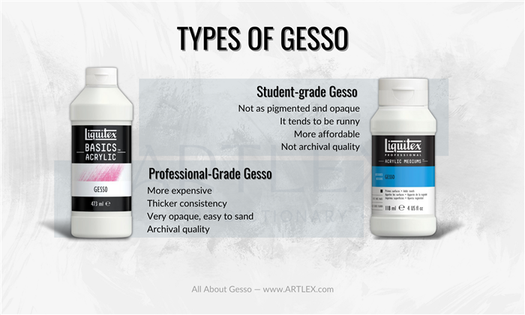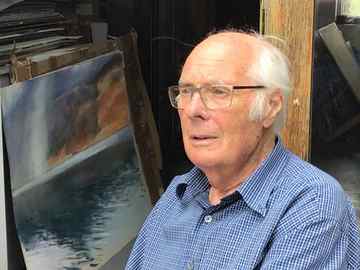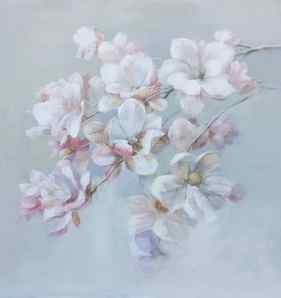What does clouds symbolize in art?

I love seeing clouds in paintings, photographs, and other visual arts. But what does clouds symbolize in art? Does it represent something specific? Here’s a few things that clouds have represented in art history and my own interpretation of clouds in art.
Like most symbolism and representations in art, there’s no one straight answer. The meaning of clouds in art has probably changed a lot throughout time, as ideologies and human opinions are constantly changing.
Clouds can also represented different things depending on the artist’s or creator’s background (religion, living era, cultural context, educational background, and beliefs). But here are some of the possible meanings of clouds in art.
Clouds in art history
In romantic era paintings, clouds represented the turbulent and ever-changing nature of inner states (feelings, emotions, thoughts). Clouds can in this sense represent the passing and fleeting nature of time, thoughts, and perception.
Clouds have also been used in traditional art to suggest “scale, orientation, weather conditions and distance” (Wikipedia on Cloudscape). So, clouds have also been used as a technique to portray aerial perspectives and scales.
Then, there’s also the ever-present connection between art symbolism and religion. In traditional Chinese arts for example, clouds can be seen as the middle space between earth and heaven where gods and other immortals would exist. Clouds could then also work as vehicles of which gods and immortals could use to travel between realms of reality. In many old western paintings of gods and other holy figures, you can also find them surrounded by clouds (e.g. angels).
For a long time, the sky and space was unavailable for human reach, and so clouds represented a space that we did not know much about. In more recent times however, since the development of science and commercialized air travel, clouds and the sky are not as mysterious to us anymore as it once was.
I think this brings us to the modern day, where clouds are more often used to bring in a touch of nature, and a touch of the outdoors to the indoors. It is not uncommon to see cloud installations inside or photobashing artists placing clouds inside of buildings and similar places.
My interpretation of what clouds symbolize in art
Personally, I paint or use clouds in my art to give a dreamy, airy, and romanizing vibe. Drawing or placing clouds where they do not really belong (indoors, around my head, in other odd places) is like creating a dream world, playing on fantasies and making things more playful.
Clouds for me also represent freedom, vastness, the feeling of “live and let live”. I also think they can make anything look pretty, friendly, and safe.
So, as you can see, the meaning and what clouds symbolize in art can be highly varied, but it’s fun to think about. Perhaps you can find a use for clouds in your own art as well?
Share this:
- Click to share on Twitter (Opens in new window)
- Click to share on Facebook (Opens in new window)
- Click to share on Reddit (Opens in new window)
The Art of Clouds

Who among us didn’t at one time imagine ourselves bouncing on billowy forms of clouds? In summer we would lie in the grass, mesmerized by endless shapes and colours. Why did some bring rain, why didn’t they last, and where did they disappear to? With their many moods, possibilities and sheer beauty, clouds have fascinated artists for centuries. It’s easy to see the appeal. Clouds are the philosophers of the sky, representing the tenuous, ever-changing nature of life. They embody the unknowable and the unattainable, carrying different meanings and emotions – from enchantment to turmoil – for each observer. In celebration of the season of cloud-watching, here are some Canadian works from the Gallery’s collection, inspired by this fugitive phenomenon.
Just a few clouds grace Stubble Fields (c. 1912), yet the eye is drawn to the way they drift, feather-like, over this harvest scene. Helen McNicoll (1879–1917) was renowned for her light-imbued paintings, and this work is a prime example of the Impressionist qualities for which she is recognized. Painted with short brushstrokes of vibrant colour, the hayfield glows with sunlight as three figures are seemingly absorbed by the task at hand. Although essentially a depiction of labour, the tone – with its wisps of cloud – is calm. McNicoll lost her hearing in childhood from scarlet fever, and navigating a silent world may have contributed to her sensibilities as an artist, and to the profound tranquility of her paintings. Despite facing societal inequalities as a young woman pursuing a career at a time when work by female artists was valued less than that of their male counterparts, she distinguished herself during her short life both nationally and internationally for her intimate domestic portrayals and evocative rural landscapes with radiant passing clouds.

Ozias Leduc, Clouds in the Light (Imaginations No. 26), 1937. Graphite on wove paper, 16.4 x 9.3 cm. Gift of the National Gallery Association Docents, Ottawa, 1979. National Gallery of Canada, Ottawa. © Estate of Ozias Leduc / SOCAN (2022) Photo: NGC
Another master of meditative scenes and soft light, Quebec artist Ozias Leduc (1864–1955) was largely self-taught. Acclaimed for his church murals and secular paintings such as Boy with Bread (1892–99) and Green Apples (1914 –15), Leduc was equally adept at drawing. In his Clouds in the Light (Imaginations No. 26), he transforms a rural landscape with luminous puffs of cloud, conveying their larger-than-life essence as they rise off the page. This small drawing is part of the gem-like Imaginations series of more than fifty landscape drawings – some real, some abstractions – made by the artist between 1936 and 1942.
At the inception of Imaginations Leduc was in his seventies, and worked from memory rather than en plein air. As a result, many of the drawings, ranging widely in subject matter from moonlight and a rainbow to the aurora borealis, have dream-like qualities. A spiritual and solitary person, Leduc was preoccupied with understanding the mysteries of the universe and human existence. Containing light and darkness, the freely drawn Clouds in the Light is a contemplative vision open to the viewer’s imagination.

Paterson Ewen, Thundercloud as Generator, 1976. Lithograph on wove paper, 76.2 x 56 cm. Gift of an anonymous donor, 2005. National Gallery of Canada, Ottawa. © Mary Alison Handford Photo: NGC
Cosmological and meteorological phenomena also captivated influential multidisciplinary artist Paterson Ewen (1925–2002). Known for his large-scale works on gouged plywood, Ewen experimented with themes of clouds and storms in a variety of media. The lithograph Thundercloud as Generator is part of the artist’s early-1970s Thunderclouds series focusing on natural phenomena associated with the water cycle, in which he referenced scientific manuals as his source materials. Specifically, the work demonstrates how clouds become electrically charged: a massive storm cloud beats rain down on the hills and trees. Above the landscape, symbols – including arrows and plus and minus signs for positive and negative charges – explain how rain occurs.
Ewen’s turbulent studies of atmospheric forces have been interpreted as psychological studies of the human experience, including the artist’s own struggles with depression. At the same time, the diagrammatic markings on these works establish order from the chaos, rationalizing weather patterns. Perhaps the release of rain from thunderclouds – a release through energy – also generated inner relief for Ewen.

Sarah Anne Johnson, Dark Cloud, 2010. Chromogenic print, photo retouching dyes, acrylic ink, gouache and india ink, framed, 64.1 x 87 cm; image: 45 x 67.5 cm. Purchased 2011. National Gallery of Canada, Ottawa. © Sarah Anne Johnson Photo: NGC
In recent decades, contemporary artists have been exploring clouds in relation to the wellbeing of our planet. Sarah Anne Johnson’s enhanced photograph Dark Cloud examines our relationship with, and impact on, the environment. By way of acrylic inks and gouache on a chromogenic print, the appearance of a mysterious cloud hovering over the sea and set against a pinkish sky is awe-inspiring, yet the message is sombre.
The work is part of the artist’s Arctic Wonderland series, based on her journey to the North on a double-masted schooner. Johnson described her sailing voyage to the Arctic Circle as “breathtakingly beautiful and sublime. It seemed so pristine and perfect, vast and strong, but also somehow delicate and fleeting.” Combining personal experience with her concerns for the environment, Johnson’s apocalyptic cloud on the horizon suggests looming ecological disaster, hinting at the irreversible damage caused by resource exploitation and global warming. It is a dramatic statement questioning the way forward, and a plea to save the Arctic ecosystem.

Hannah Claus, our minds are one, 2014. Digital print on polyester film, thread, PVA glue, acrylic sheet, and aluminum frame, 245 x 304.8 x 304.8 cm. Purchased 2018. National Gallery of Canada, Ottawa. © Hannah Claus Photo: NGC
A member of the Tyendinaga Mohawks of the Bay of Quinte, Hannah Claus, like Johnson, creates works that consider the interconnectedness of human life with the earth, sky, water, air, plants and animals urging us to be aware of our shared responsibilities towards one another and nature. Recently on view in the Gallery’s exhibition of contemporary Indigenous art Àbadakone | Continuing Fire / Feu continuel, her ephemeral installation our minds are one is a three-dimensional, ten-foot wide dome of glossy discs suspended by threads and printed with images including sky, trees, sidewalk and the ground.
It is one of Claus’ numerous “cloud” works, and presents her Haudenosaunee perspective of the Sky Dome, or inverted dish, which values each small part of creation equally. Together, these separate pieces form a whole. The threaded discs allude to Indigenous traditions of beadwork, and the ways in which wampum belts and wampum diplomacy – in this instance the Dish with One Spoon belt iconography – continue to influence the work of contemporary Indigenous artists. Viewers are invited to immerse themselves physically in the work: passing through the installation affects the cloud itself, as the discs sway in the air, indicating the interconnectedness of our actions and how the slightest of movements impacts our surroundings.
Wandering through the Gallery, one loses count of the many works in which clouds appear: clouds taking on extraordinary colours and scattering light, clouds on sunrise skies, sky studies, sculpted clouds and snow clouds. Each one tells its own story or – latterly – a precautionary tale. A world without clouds seems impossible. Yet as cloud loss becomes part of the climate change conversation, the absence of clouds may turn into a common theme for artists, reminding us to pay attention.
In praise of clouds, let us all find a patch of grass, lie back and take a minute, in this moment, to witness something we won’t see again.
Share this article and subscribe to our newsletters to stay up-to-date on the latest articles, Gallery exhibitions, news and events, and to learn more about art in Canada.



